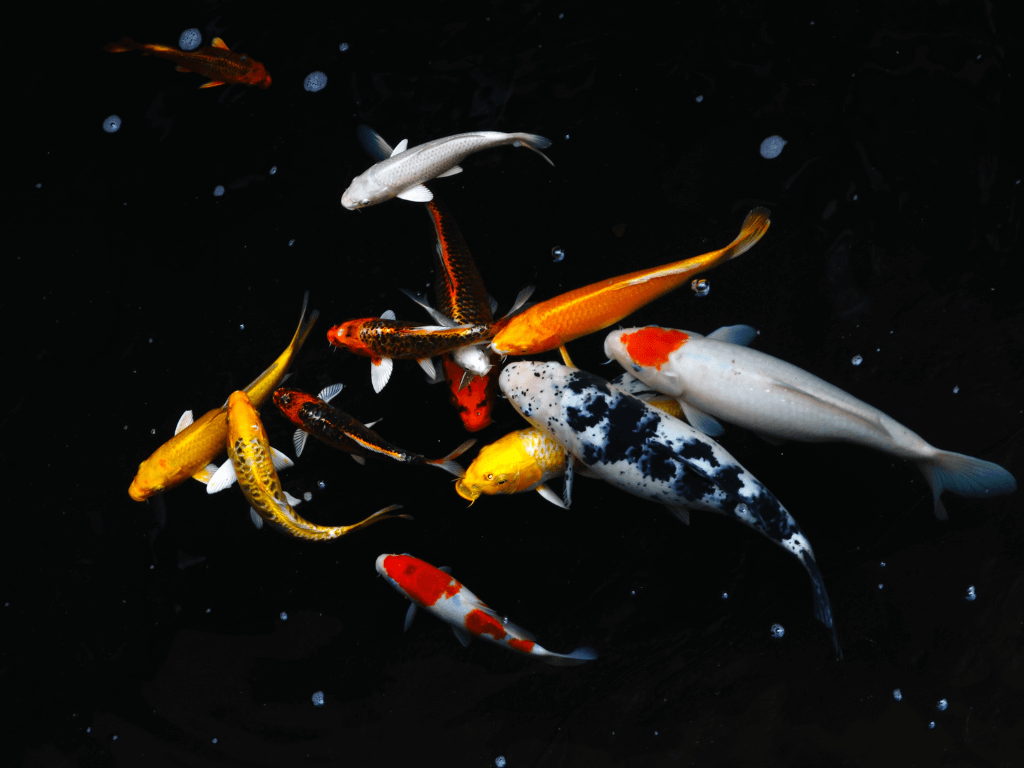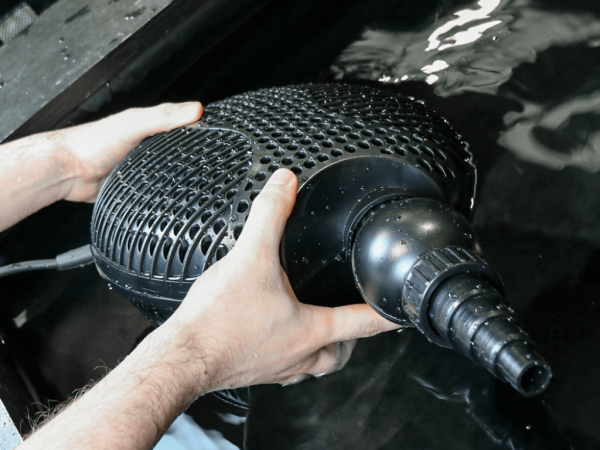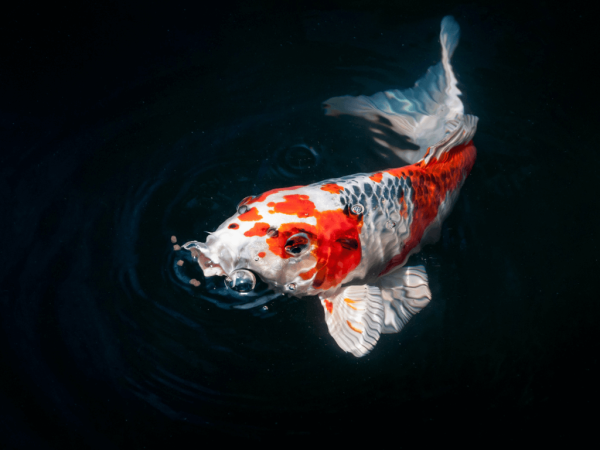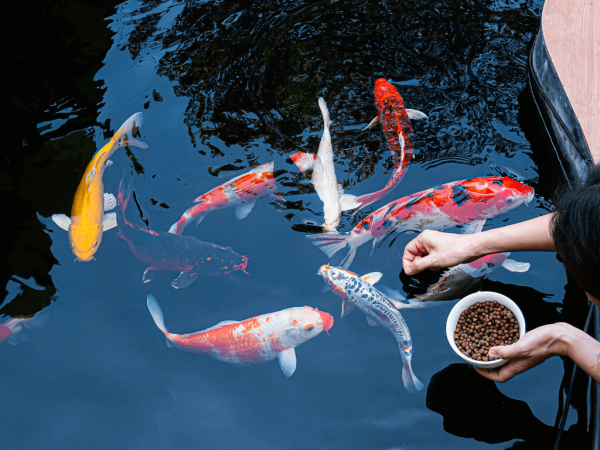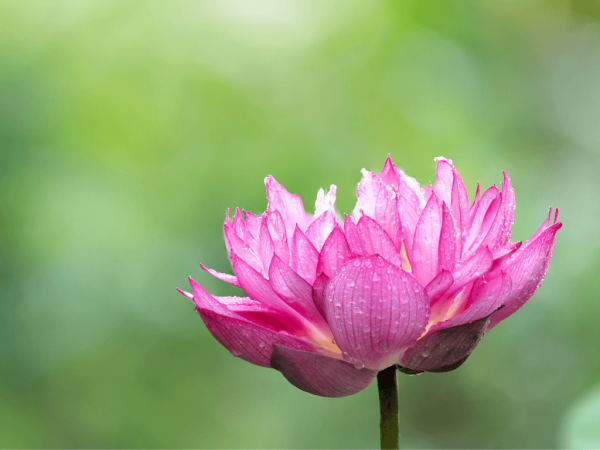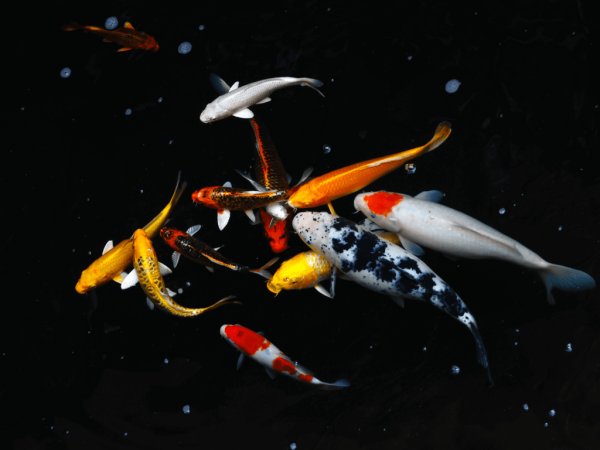Pond Fish: A Beginner's Guide To Common UK Varieties
There are many different species of fish suitable for outdoor garden ponds, from domesticated native species like Rudd (Scardinius erythropthalmus) to colourful exotic species like Koi Carp (Cyprinus rubrofuscus). These pond fish can be kept in garden ponds year-round in the UK, even during winter when temperatures get close to freezing! But what are these different fish types, how do you care for them, and how many can you keep in your pond?
Goldfish
There are few pond fish more recognisable than goldfish - a fish that many of us may have kept as youngsters. They come in a variety of shapes and colours, from single-colour common goldfish, to multi-coloured Shubunkins and Sarasa Comets.
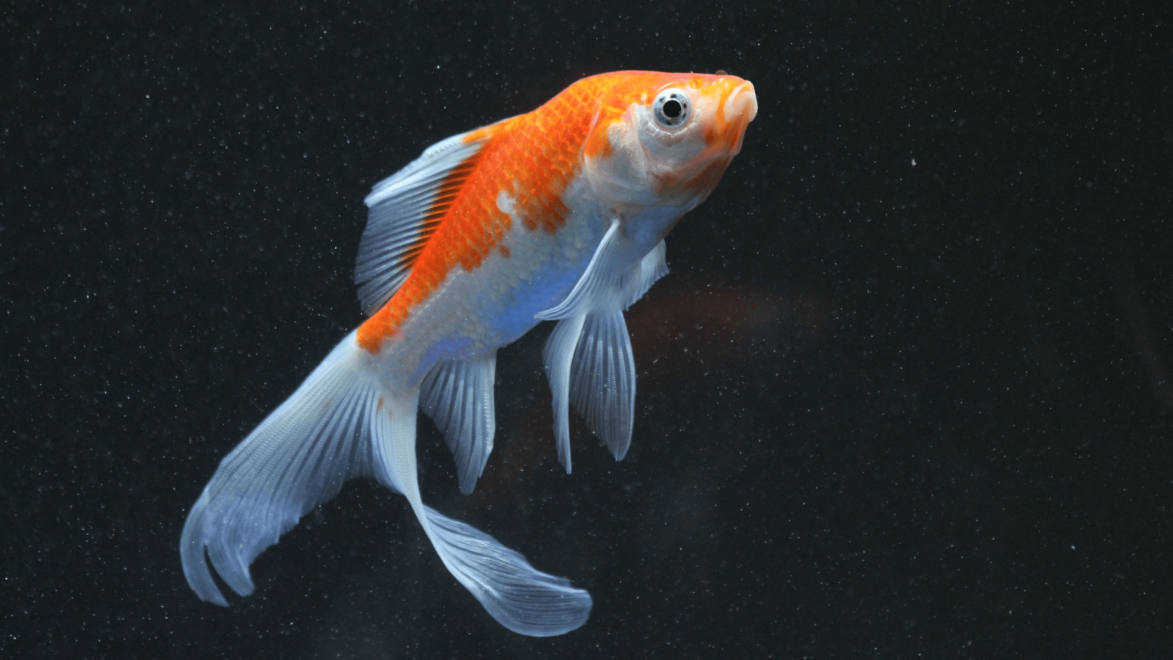
Of all the pond fish available to keep in the UK, they're some of the cheapest, hardiest, and most colourful. They're typically safe with pond plants too and will only eat problem varieties like duckweed. This makes goldfish a fantastic choice for weed control.
How do I care for goldfish?
Like all pond fish, goldfish require pristine water quality to really thrive. They can be quite messy, but provided they're kept in a garden pond with a quality pond filter, ample space, and some pond plants, they won't pollute your pond water.
While some varieties can grow quite large, typically goldfish max out at 25-30cm in length. This makes them a suitable choice for small to medium-sized ponds, like a preformed pond, a wildlife pond, or even a sunken bathtub!
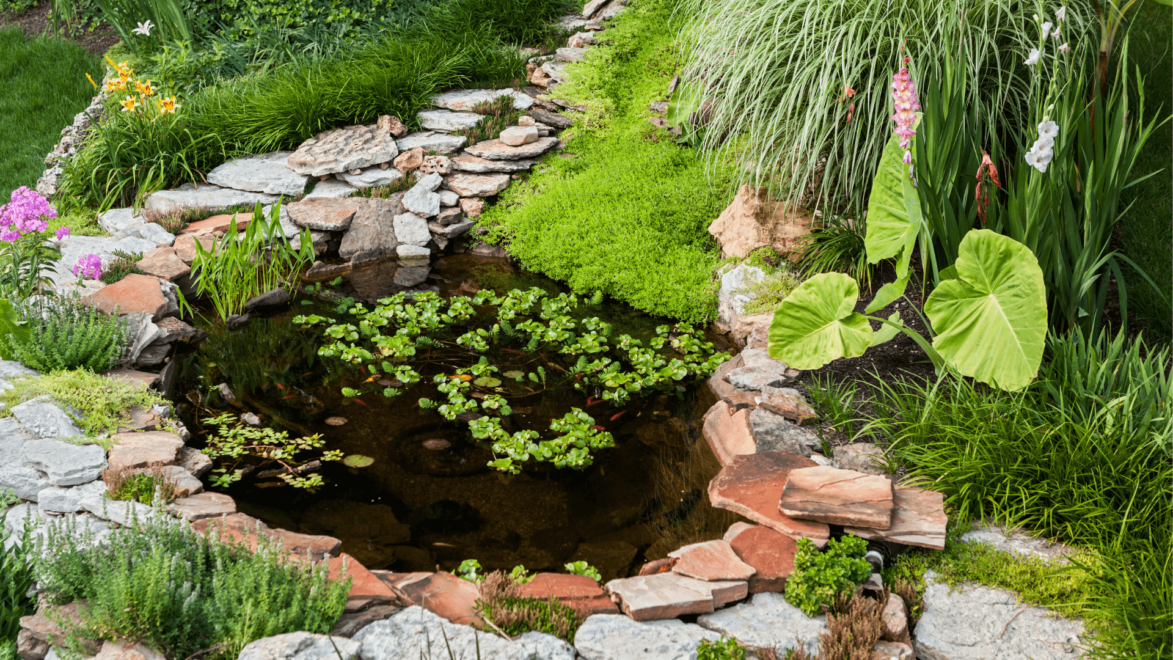
Goldfish are very peaceful pond fish and get along with many other common varieties, like Koi Carp and Golden Orfe. They can also be fed a similar diet of high-protein pellets in spring and summer, and wheatgerm food in autumn and winter.
Koi Carp
These pond fish are amongst the most popular fish in the pond keeping hobby and are available in a countless number of shapes, sizes, colours, and patterns. For hundreds of years, Koi have been bred for their looks, resulting in some truly stunning types like Tanchos, Asagis, and Doitsus.
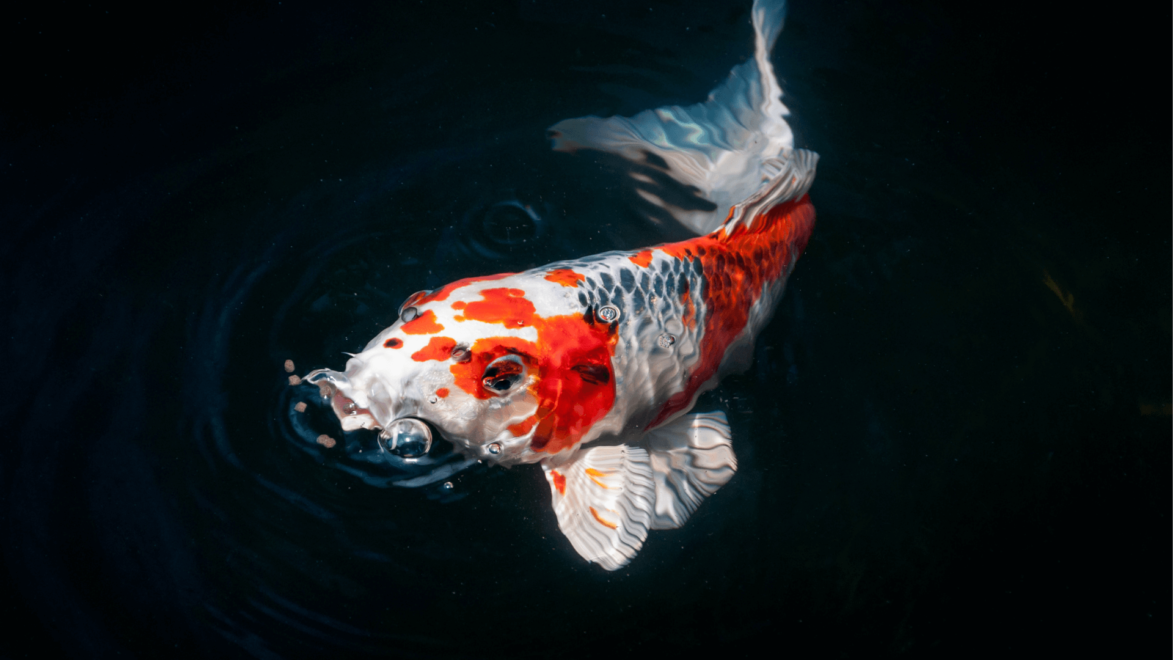
Some varieties of Koi Carp are quite affordable, especially when they're bought as juveniles, but others can be incredibly expensive. According to Business Insider, the most expensive Koi ever sold - a nine-year-old Kohaku named S-Legend - went for a princely sum of $1.8 million!
How do I care for Koi Carp?
No matter the type of Koi Carp you have in your garden pond, they'll make a lot of mess. They're big fish and they eat a lot of food, resulting in a lot of waste. To make sure their pond's water quality remains pristine, you'll need to set up a pond filter - the bigger the better.
Koi Carp also require a lot of space and need to be kept in garden ponds that can hold thousands of litres of water. Again, bigger is always better, but at a minimum you should aim to keep no more than one Koi per 1,000L of pond water. As ponds grow larger and exceed volumes of 15,000L, you can relax on this rule a little and stock a few more Koi Carp.
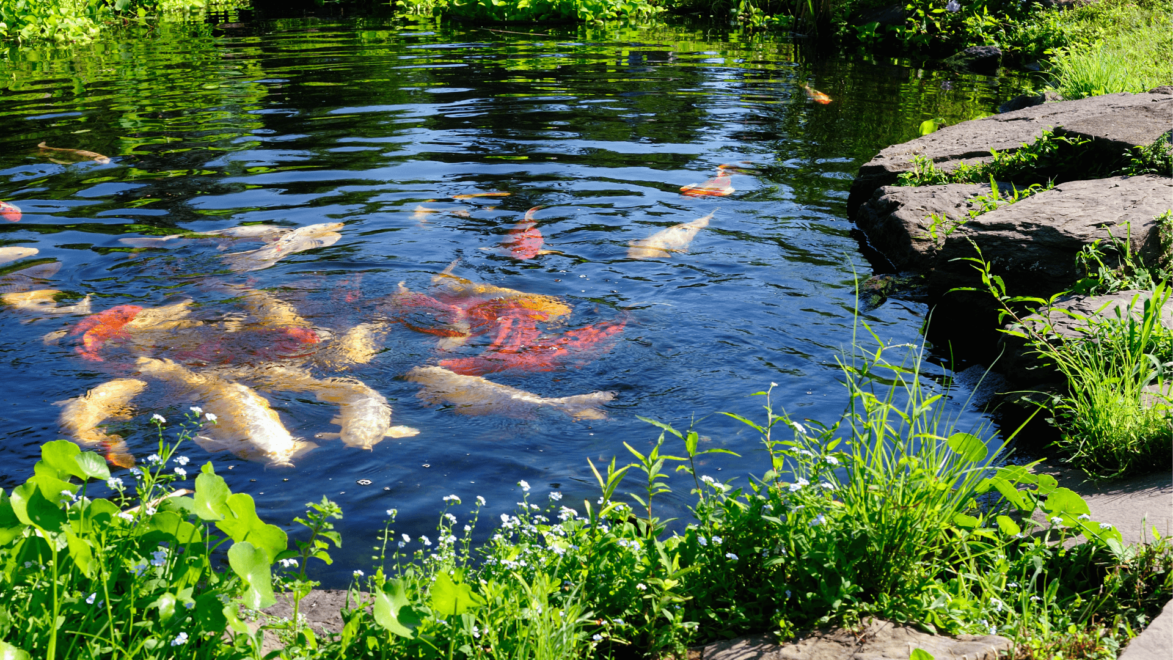
It's worth noting that Koi Carp are voracious eaters and will chow down on almost anything, including any aquatic plants that you may keep in your pond. If you want to keep pond plants, consider putting them alongside the margins of your pond where they're less likely to be eaten. Like goldfish, Koi are very peaceful and can be kept alongside many other types of pond fish.
Sturgeon and Sterlet
These bottom-feeding fish look a lot like sharks and, like sharks, need to swim constantly. Their unusual looks are what make them such popular pond fish, with many keepers choosing to add Sturgeon and Sterlet to their ornamental ponds alongside other types of pond fish, like goldfish and Koi.
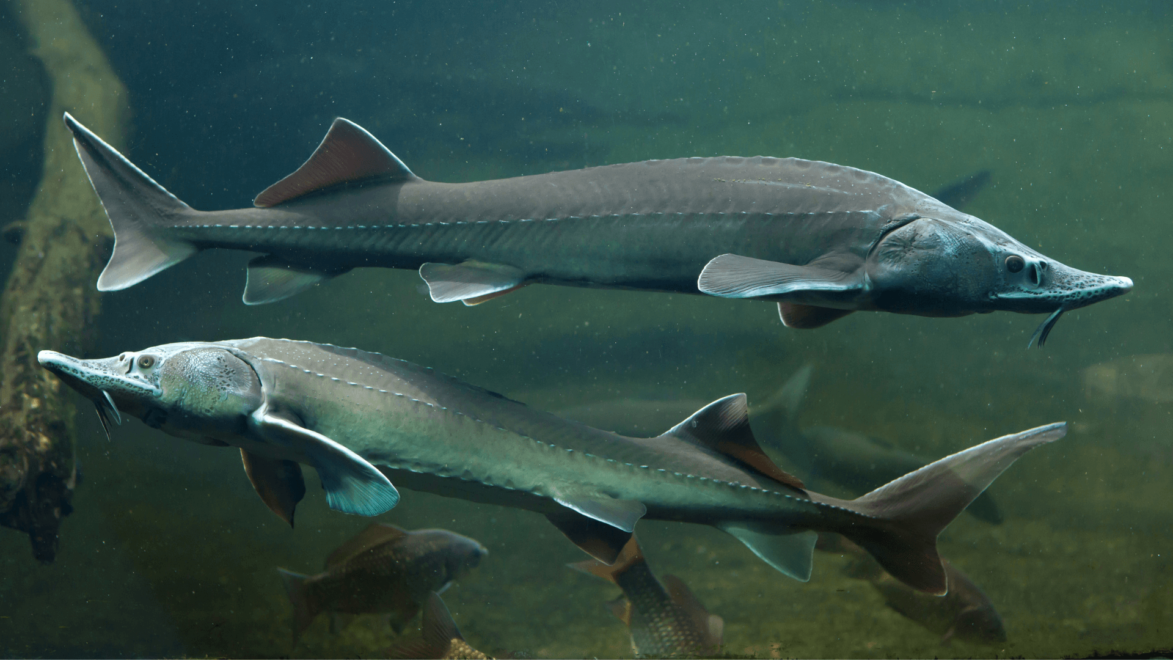
The biggest difference between Sturgeon and Sterlet is their size. While Sterlet are part of the wider Sturgeon family, they don't grow nearly as large as Common Sturgeon with most maxing out at lengths of around 90cm. It's not uncommon, however, to see Common Sturgeon exceed lengths of 150cm. The largest ever Sturgeon - a female Beluga Sturgeon caught in 1827 - measured in at 731cm (or 24 foot) and weighed a whopping 1,558kg!
How do I care for Sturgeon and Sterlet?
As bottom-feeding pond fish, the most important thing to consider when keeping Sturgeon and Sterlet is whether they're getting enough food. If they're kept alongside other pond fish, like goldfish and Koi Carp, then they may struggle to compete for floating food. To ensure they get their fair share, offer them some specialist sinking pellets.
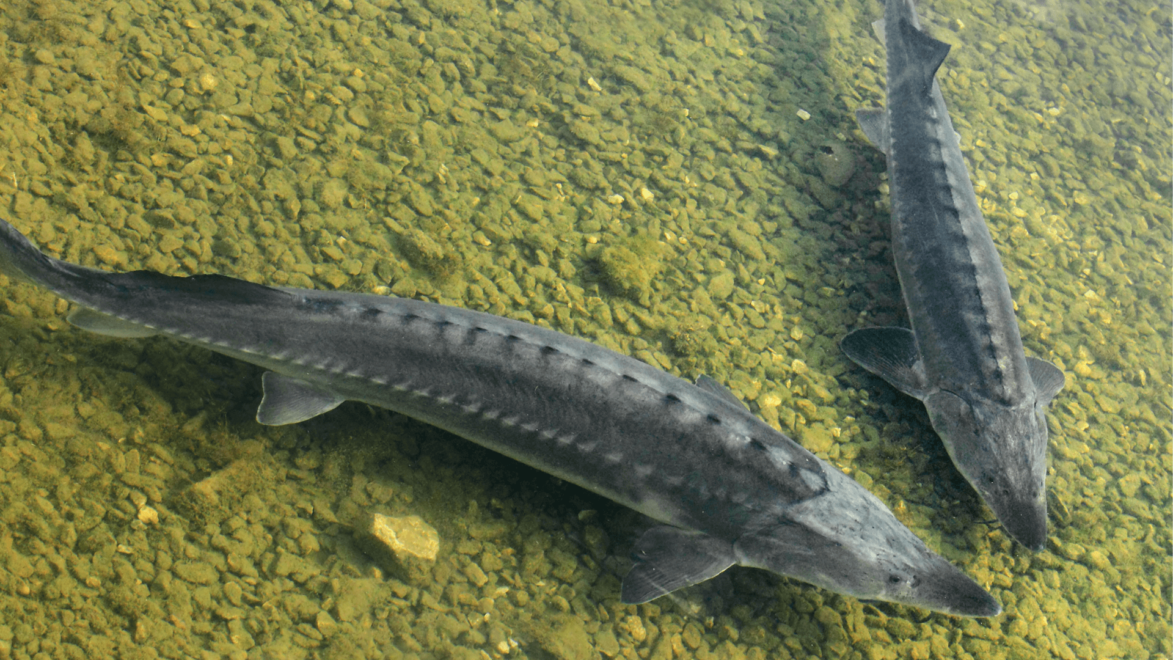
Sturgeon and Sterlet require a lot of space and a pond with an efficient filtration system to deal with the large amount of waste they produce. They also like a pond that has high flow and lots of dissolved oxygen. To create these kinds of conditions you'll need a powerful pond pump hooked up to water features that simulate their natural environment, like waterfalls and streams.
Native Freshwater Fish
The UK is home to many freshwater fish, a handful of which can be kept in garden ponds. Gudgeon, Barbel, Stickleback, Rudd, Roach, Bream, and Tench are commonly available in the pond keeping hobby and all make fantastic additions to ornamental and wildlife ponds. They don't come in quite as many colours and shapes as goldfish and Koi Carp, but they do have their own charm.
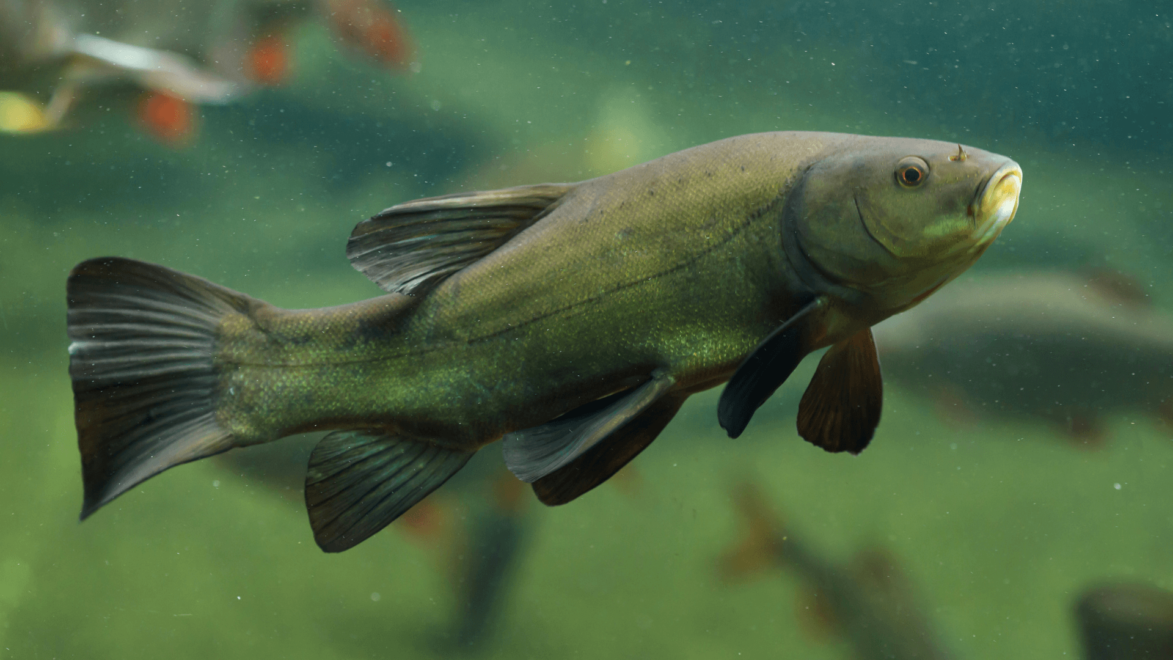
How do I care for native freshwater fish?
This depends on what type of native freshwater fish you're planning to keep. Tench and Rudd are most suited to medium to large-sized ponds with excellent water quality and lots of deep spots. These pond fish typically retreat to low depths during the hot summer months to stay cool.
Gudgeon and Barbel, on the other hand, like fast-flowing, well-oxygenated water that simulates the rivers they come from. To replicate this kind of environment, make sure you pick up a pond pump with a large max flow rate and an air pump that can power multiple large air stones.
Stickleback don't grow very big and can, as a result, be kept in small wildlife ponds. They don't often take to pond fish food, though, and will instead feed on other pond life, like mosquito larvae. This makes them great pest control in wildlife ponds that don't contain any other fish.
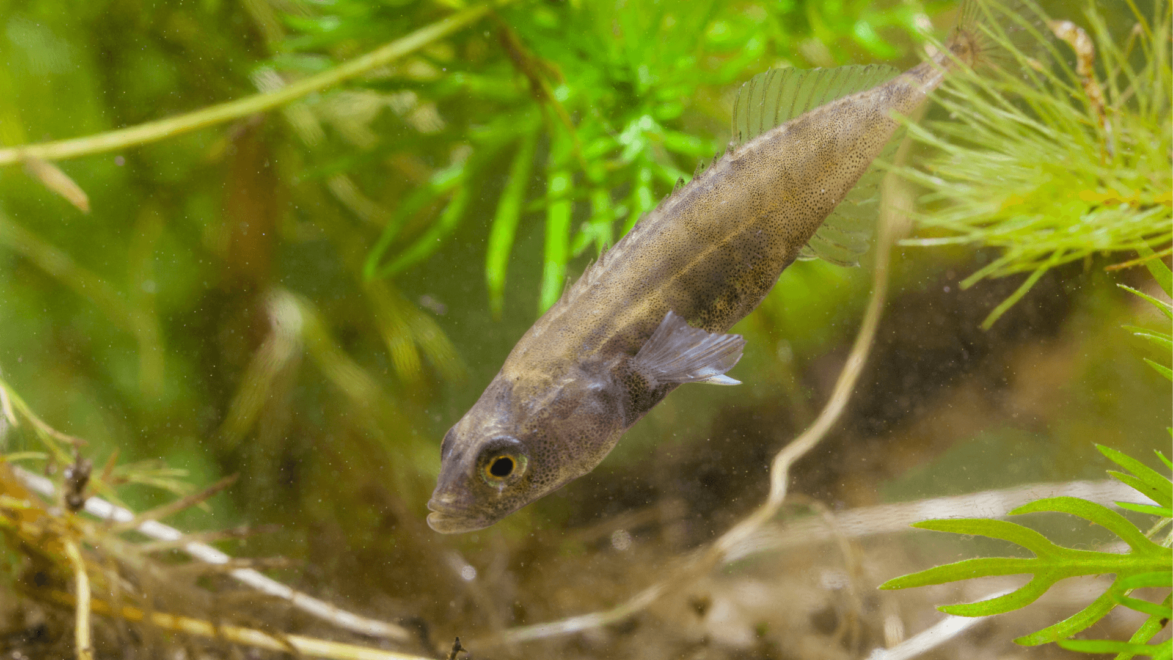
There are some native freshwater species that you should try to avoid. Trout, Perch, and Chub are all predatory fish that cannot be kept alongside other pond fish. They're jumpers too and need really, really clean water to survive. Also, never take fish from the wild - it's illegal and they may carry diseases that your pond fish are vulnerable to.
Illegal Freshwater Fish
Though they may have been legally sold in the past, some species of fish are now illegal to be kept in garden ponds in the UK. These include North American Sunfish, like the Pumpkinseed (Lepomis gibbosus), Chinese Sleeper, Stone Moroko, and all types of Crayfish. These are all invasive species that could, if released into the wild, wreak havoc on native species.
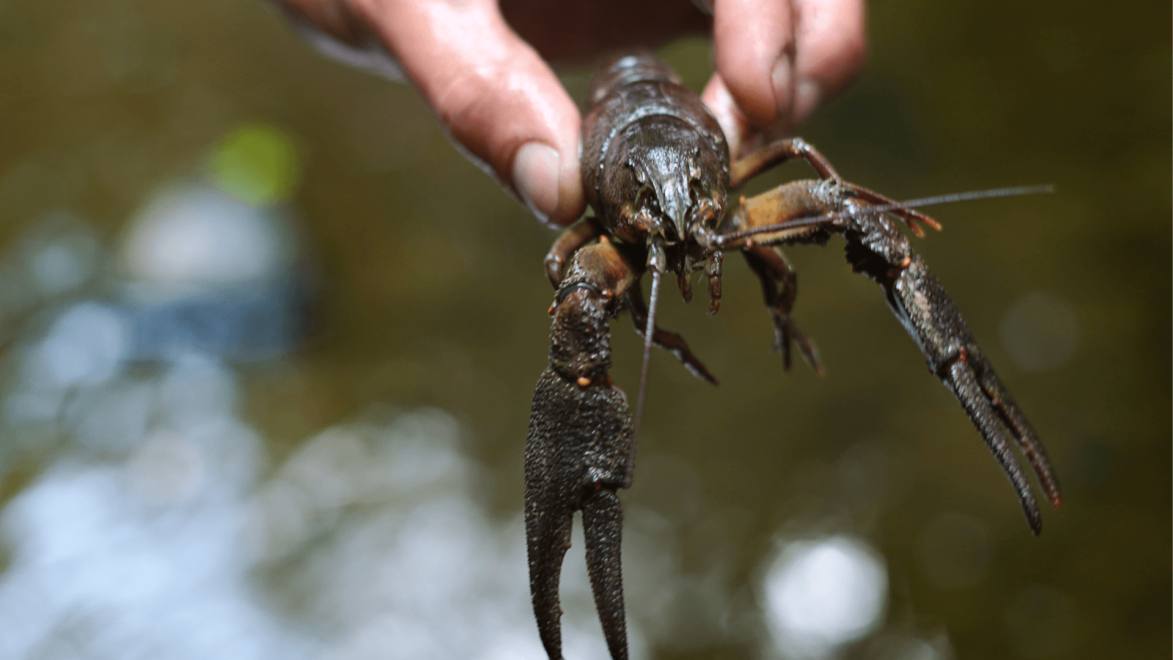
Other types of fish may require a licence if you want to keep them in your garden pond. These types include Bass, Marbled Trout, Blue Bream, various species of Carp and various species of Perch. If you're unsure whether a fish can be kept in a garden pond, it's always a good idea to get in touch with one of our experts to check.
Suitable Pond Fish Species:
- Goldfish
- Shubunkin
- Sarasa Comet
- Comet
- Koi carp
- Ghost koi
- Common carp
- Mirror carp
- Golden Orfe
- Blue Orfe
- Green Tench
- Golden Tench
- Rudd
- Golden Rudd
- Roach
- Barbel
- Gudgeon
- Stickleback
- Grass carp (often added for weed control)
- Sturgeon
- Sterlet
- Bream
If possible, quarantine all new pond fish before you add them to your garden pond full of other pond fish. It's also a good idea to stock up on some specialist pond fish food to feed your new inhabitants, and some water treatments just in case they start to show some signs of illness.




